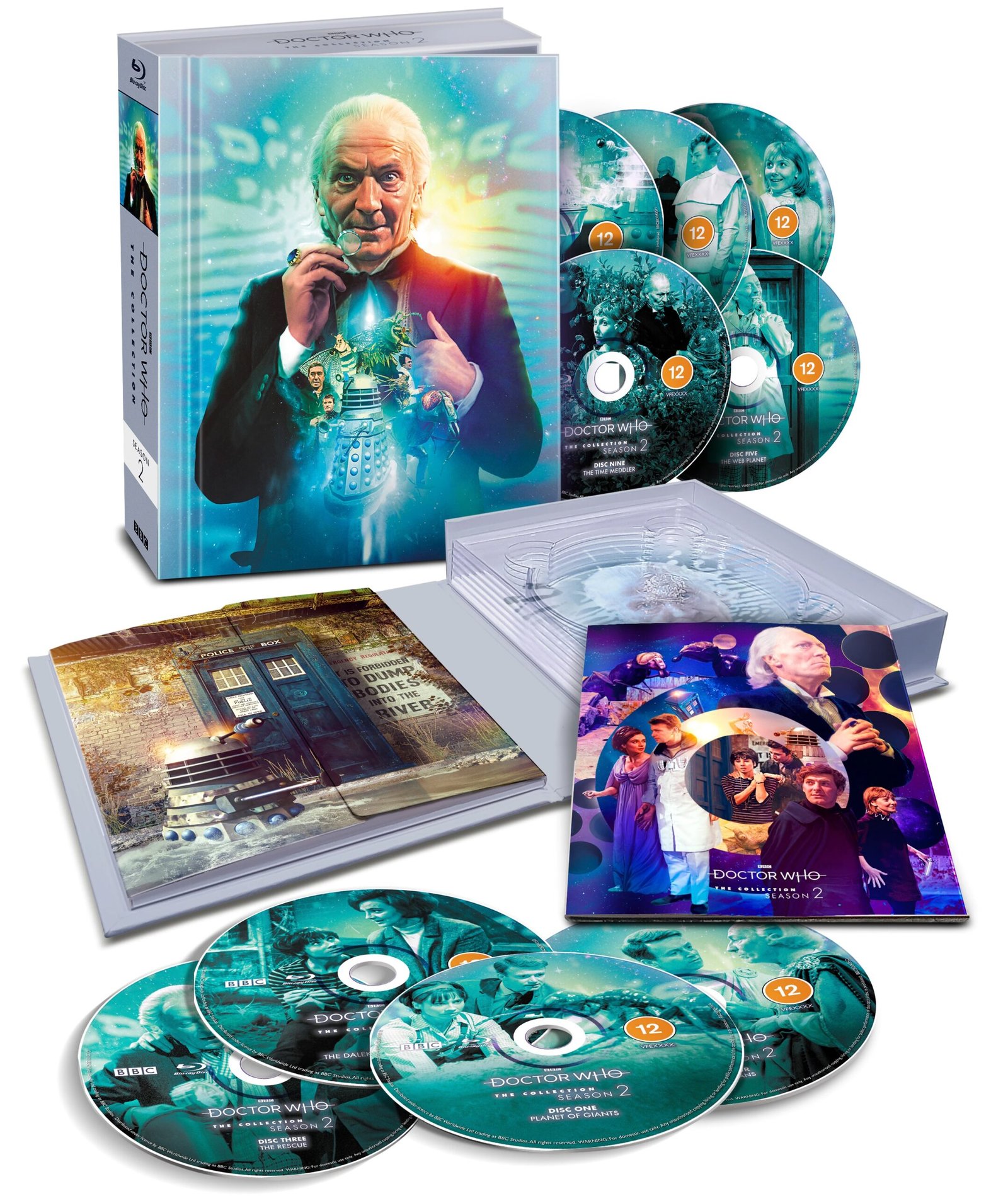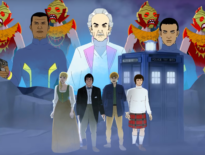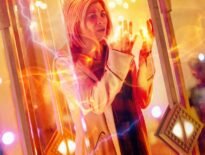Having finally obtained William Hartnell’s second season on Blu-ray — the first black and white season to get the royal treatment — I found myself once again swept up in “Overview mode”. Watching each story in fairly rapid succession, forming one larger overall story, as episodes had actions and consequences from one adventure overlapping onto the next.
For the better part of the first three seasons, the episodes had their own titles. It wasn’t until years later that they were grouped together and catalogued as larger stories. The now recognised six part story The Chase didn’t have Part One, Two, Three — no. They featured episodes with titles like The Executioners, Flight through Eternity, and The Death of Doctor Who. (That title must have rattled a few kids.)
But it was so enjoyable to experience the downtime and interpersonal relationships of the TARDIS crew. Quite the immersive experience. The little things, like at the beginning of The Web Planet, Barbara and Vicki chatting about the gold bracelet Barbara received from Nero in the previous romp, The Romans; or the toll Susan’s departure took on the Doctor as the events of The Dalek Invasion of Earth ended and The Rescue began.
It’s also worth noting that as always, the restoration team has added as much digital magic as is possible to bring us the best in sound and picture. Such wizardry gives us such good detail, you can often see the seams and wrinkles in some background “skies” and the like — and I relish it. In some productions, spotting an obvious background painting might take you out of the story, because suddenly, they’re no longer “fooling” you. Not so with 1960s Doctor Who. It’s all part of The Play. Many of these enhancements were made going into the individual DVDs, so I’m unsure how much more has or could be added here, considering the original sources’ limitations of the day.
As for the adventures themselves, the production teams of the day created without a doubt some of the most imaginative and ingenious work ever done on television. Especially considering the threadbare budget of the BBC. There were times where they clearly bit off more than they could chew, or you could say the production team’s eyes were bigger than their stomachs, but even then, you had to give your compliments to the chef for sheer determination and bravery, bringing forth a tantalising repast.
The incomparable Verity Lambert and co. brings us Doctor Who Season 2.
Planet of Giants
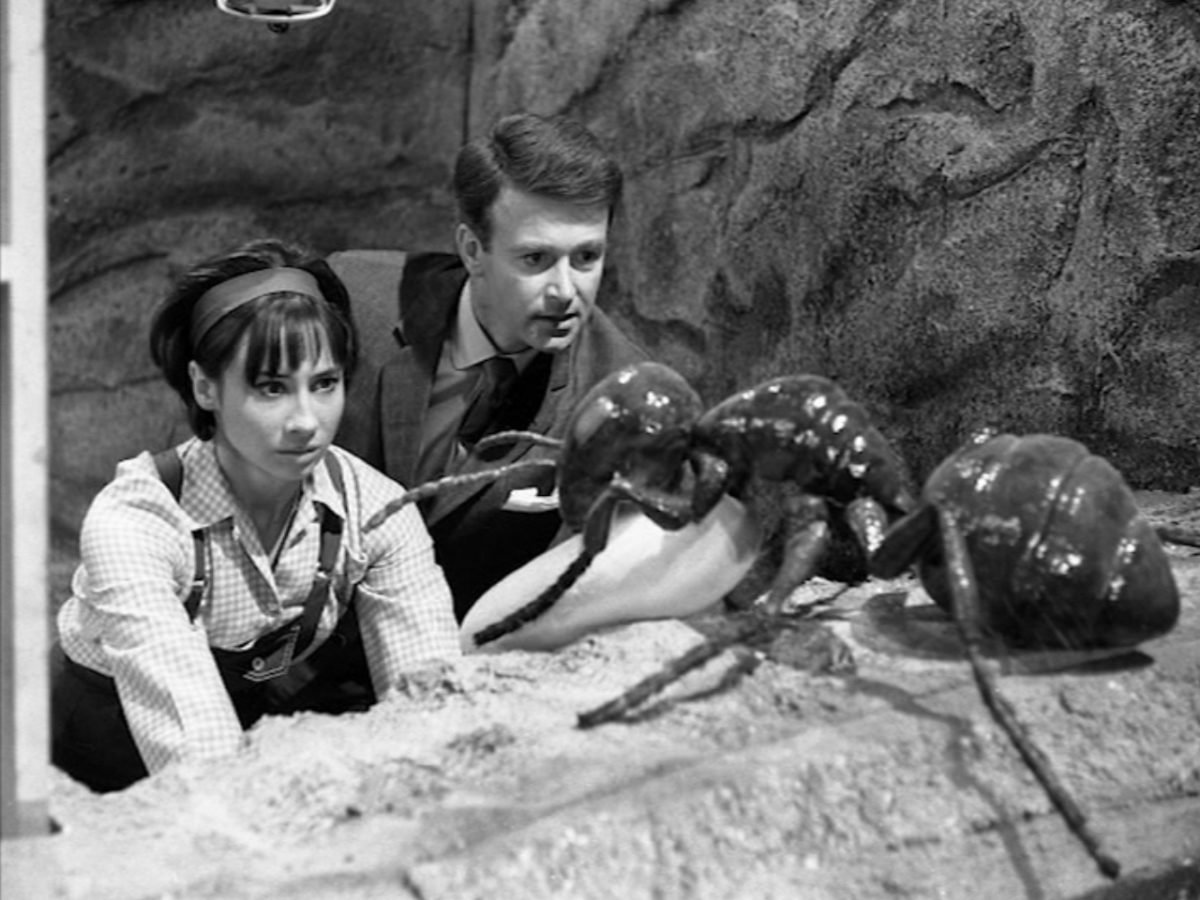
Written by Louis Marks, directed by Melvyn Pinfield and Douglas Camfield
Episode titles: “Planet of Giants”, “Dangerous Journey”, “Crisis”.
I’m not sure if this three parter gets its proper due when opinion polls look back on it. Not only is it economically paced, unlike some six parters I can think of (hello, The Sensorites, or insert any one of the more bloated, longer stories here…), but it’s simple, to the point, and at times, chilling. And the prop work! The detail and craft shown in creating the sink drain, the valise, the match, the INSECTS! These were amazing. Extra points on the story’s reasoning for why most of these bugs didn’t move, thus helping sell the authenticity—and then, they give us the fly, which does.
And it must be said that this is how you have the four person main cast interact. In each of these stories, no character is wasted, everyone is utilised, used to build and explore drama, emotion. The comfortable back and forth as seen through the first and second season especially is a testament to the superb writing as well as its lead actors. Here, Barbara hides the fact that she’s been poisoned by the insecticide, which builds the tension as the crew’s situation gets ever more desperate. You care about these travellers.
8 of 10.
The Dalek Invasion of Earth
Written by Terry Nation, directed by Richard Martin
Episode titles: “World’s End”, “Day of Reckoning”, “The Daleks”, “The End of Tomorrow”, “The Waking Ally”, “Flashpoint”.
This is a six-parter that earns its place in the ranks, as well as its length. The Daleks put Doctor Who on the map, but Lambert waited a year before bringing them back. Almost hard to believe it’s only the second Dalek story, but it’s a powerful one. We open on a poster warning against dumping bodies in the Thames. And we’re off.
Although the quality track record on six-part adventures can vary —excessive padding is the most persistent criticism— The Dalek Invasion of Earth makes the most of its airtime. It gives us a healthy dose of Daleks, an insane scheme on their part, a true feeling of hopelessness, then victory (and even romance). This was one of the rare examples of a companion relationship feeling honest and earned, even if you watch all six parts in one sitting, as opposed to over the course of six weeks as originally aired. Susan and David belonged together, and it felt right. Perhaps you can chalk up this rare, well developed relationship to having a female producer? Possibly.
The circumstances under which the Doctor leaves his granddaughter behind creates one of the most poignant endings for a companion ever. Later companions under different producers didn’t fare nearly as well.
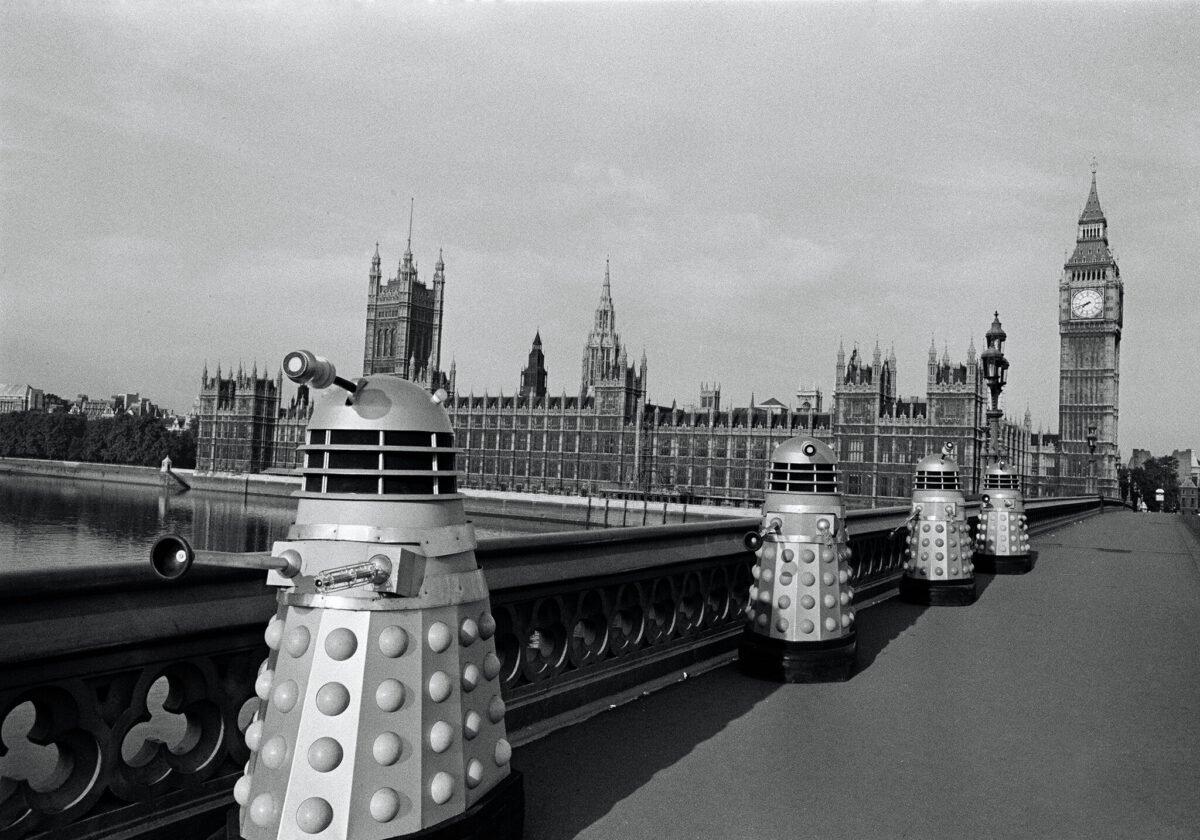
Of course, Carole Ann Ford leaving the show upset Hartnell almost as much as Susan leaving her grandfather did, but Ford felt there wasn’t the type of character development she hoped for with Susan, and she was right. There was far more hysterical screaming than there needed to be, especially for such an allegedly advanced and sophisticated teenager. One of the rare blemishes of the Lambert era.
Along with the established remastering, the updated effects first brought in for the DVD are also here. Superbly inserted into the proceedings, blending in and elevating the effects to just the right levels. Also, kudos to the superior menu design on the Blu-rays. When choosing the updated effects on the DVD, it was never made clear if the new effects were on or off. Very frustrating.
In the end, the only thing more chilling than seeing the Daleks on Skaro, was bringing them to Earth.
9 of 10.
The Rescue
Written by David Whitaker, directed by Christopher Barry
Episode titles: “The Powerful Enemy”. “Desperate Measures”.
In this noteworthy two-part adventure, the Doctor actually sleeps through the TARDIS materialising, and even after landing on the planet Dido, he wants nothing more than another nap. He is, simply, depressed. His granddaughter is gone. It’s the first time we’ve seen the Doctor lose someone, and it’s taken away some of his spirit. Ian and Barbara are rightfully concerned for him.
But they and we soon meet a ship-wrecked survivor named Vicki, who’s kept under the thumb of the menacing Bennett, and the even more menacing Koquillion, as the TARDIS crew tackle the mystery surrounding them. Maureen O’Brien’s Vicki is the perfect tonic for not only the Doctor, but the viewers as well. Vicki may be a young girl, similar to Susan’s age, but that’s where the resemblance ends. Vicki will often give as good as she gets, isn’t a screamer, and doesn’t seem to twist her ankle on a regular basis.
Of course, some of that’s the writing, but some of it’s also how O’Brien carried herself as Vicki, refusing to be a useless, screaming hostage, I salute her for that. Having established the new crew, they moved on…
7 of 10.
The Romans

Written by Dennis Spooner, directed by Christopher Barry
Episode titles: “The Slave Traders”, “All Roads lead to Rome”, “Conspiracy”, “Inferno”.
Dennis Spooner is a fantastic writer who knew how to blend comedy and drama. I don’t know if that ability has ever been more apparent than in The Romans.
Spooner treats us to relaxing moments with Ian and Barbara as they continue to enjoy peace and quiet outside Rome in a “borrowed” villa, where the TARDIS crew has been for a month! They tease and joke with each other, further showing us the bond they have. Contrast that with facing the realities of being kidnapped and sold into slavery within the same episode! This was a real rollercoaster, this one.
While Ian and Barbara face an uncertain future, the Doctor and Vicki visit Rome, and find themselves in intrigue up to their necks. The Doctor even makes quick work of an assassin trying to do him in. Don’t know if we’d ever seen him so spry. I can’t help but think about that Power Nap he took at the beginning of The Rescue…
The Doctor even takes advantage of a case of mistaken identity and parlays it into an audience with Caesar Nero himself. Spooner masterfully weaves the independent storylines together, showing just how lovely, amusing, and terrifying visiting the past can be.
8 of 10.
The Web Planet
Written by Bill Strutton, directed by Richard Martin
Episode titles: “The Web Planet”, “The Zarbi”, “Escape to Danger”, “The Crater of Needles”, “Invasion”, “The Centre“.
Okay, a lot to unpack here. Intention, ambition, visual choices, costuming choices, budget: you name it. Maybe get a cup of coffee, make a sandwich, or grab a cocktail, depending on the time of day you’re reading this.
Verity Lambert was capable of virtually anything. What she’d accomplished with this alleged “children’s show” was nothing short of miraculous, and to do it in the face of the opposition of the times was even more impressive.
That being said, The Web Planet fell a bit short. If that had been the second ever serial of Doctor Who instead of The Dead Planet, I think it’s fair to say the Beeb might not have let them go beyond 13 episodes.
But… has there ever been a more ambitious undertaking in the history of the show? I’d be hard pressed to think of one. Here’s an episode guide note regarding the genesis of the story idea and behind scenes planning:
“When crafting an idea for the serial, Strutton recalled a memory as a child of watching two bull ants fighting, which he linked with his two sons fighting each other. Story editor Dennis Spooner found the narrative to be multilayered, with the Menoptra representing free enterprise and the Zarbi communism. Martin hired a mime artist to develop choreography for the serial, and forwent a traditional score in favour of prerecorded stock music. The Web Planet premiered with 13.5 million viewers, the highest in the series to date; it maintained high viewership across the six weeks.”
But reviews were mixed, citing a confusing story, but appreciative of the monumental attempt. Everybody went out of their way on this one. I have to imagine this story ate up a fair amount of the season’s budget, even amortizing it across six episodes.
I’ll admit, the parallels of free enterprise and communism were totally lost on me, and I’m sure the same could be said of the small children watching it live, back in the day. At the same time, I would think the kids ate this one up. Butterfly people, giant ants, and… whatever the Optera were. Grubs? All I know is, the lead Optera sounded — and I’m not joking — exactly like Razor in World Enough and Time. I’ll admit, the voice of this grub character… I pictured the Master once again staying in some bizarre disguise for years, for… some reason.
The poor costume designers. At least with The Romans, there was a fair chance they could have borrowed some togas from other BBC productions. But here… at first, I’m sure they were excited — getting to design an alien, humanoid, butterfly species! Stripes, and fur and large wings that spread out, because of course they have to fly as well. Quite the mission statement already.
But then, there was a need for a second, totally different species that look like giant ants, massive, with hard shells which would require actors and stuntmen to be bent over at awkward, back-breaking angles for hours at a time.
AND then, a third alien species, looking like grubs, were necessary. While they successfully approximated the look and feel of furry butterflies, with gossamer wings for the Menoptera, and even the menacing, hard shelled ant appearance of the Zarbi, the end result for the Optera was more like a school play, with lots and lots of felt, but I sympathise. I mean… grubs.
The set designers needed to create the Animus character, a disembodied alien underground presence, and of course the massive planet Vortis, with the painted night sky filled with stars and moons.
I’m not sure how much of this production was an exciting challenge, and how much of it was a headache, but I can only imagine the logistics of prepping a scene where several Menoptera all swoop down across an alien landscape — laid out in several levels — to engage in battle with the Zarbi.
ZAARRRRRBEEEEEEEEEEE!

Martin hiring a mime to coordinate the different species’ movements, adding a filter to the camera lens to give Vortis’ atmosphere a different, slightly blurred, alien look… So much detail. Thankfully, the visuals here are much much better and sharper than the first time I watched the serial years ago. There’s no doubt, those improved visuals help the experience quite a bit, but yes, as far as pacing goes, if this were a four-parter, the whole story would have been a bit less of a slog.
Credit where credit is due on this ambitious venture, but it was about 50 years ahead if its time.
Side note: Still also better than the puppets in Invasion of the Dinosaurs. Just saying.
6 of 10.
The Crusade
Written by David Whitaker, directed by Douglas Camfield.
Episode titles: “The Lion”, “The Knight of Jaffa” (missing), “Wheel of Fortune”, “The Warlords” (missing).
The options regarding the presentation of missing episodes 2 and 4 here surprised me in a good way. The big point of contention here is that with all of season two naturally intact except for only two episodes, The Knight of Jaffa and The Warlords, you’d think the BBC would have gone to the trouble of animating those two eps. They did not, but they had their reasons.
However, they do give options on experiencing the missing episodes. One option is to watch episodes 2 and 4 through telesnaps matched with the original soundtrack, which I’ve done in the past. This time, though, I opted for William Russell, as Ian Chesterton telling us about the events of the two missing episodes while in his study, and I must say, it was lovely to see Russell back in character, reminiscing about his time with the Doctor.
In a way, it’s almost the best of both worlds. We get to see episodes 1 and 3 with stunning performances by Bernard Kay (Saladin), Julian Glover (King Richard), and Jean Marsh (Princess Joanna), and the rest of the time, we spend with Ian. I believe Russell must have filmed his connecting scenes some time ago, because he appeared some 15 to 20 years younger than he is now. Seriously, I have no complaints; I enjoyed that they did this.
Would something like that work to “patch over” the entirety of Marco Polo? Doubtful, although I don’t know if Russell happened to do anything like that for that story back in the day.
But here and now, in this instance, it worked for The Crusade.
As for the story itself — oh, how I wish those episodes would be recovered. Once again, Doctor Who meets masterpiece theater. Intense drama, and plenty of action. The Doctor battles brigands with his sword, right alongside Ian. That Power Nap again!
One final note — David Whitaker was the absolute best at writing historical adventures.
8 of 10.
The Space Museum

Written by Glyn Jones, directed by Melvyn Pinfield
Episode titles: “The Space Museum”, “The Dimensions of Time”, “The Search”, “The Final Phase”.
Not one of the more popular stories, but very high concept and something we’ve seen before and also copied quite a bit over the decades in other sci-fi shows. A very Twilight Zone feel to it, with the crew trying to change their own future to prevent becoming exhibits in the titular location. A well done story with a couple interesting side notes such as a young Jeremy Bulloch a decade before his turn as an archer in The Time Warrior and as Boba Fett in Star Wars.
Also, after being abducted, the Doctor plays opossum before getting the drop on one of his attackers, leaving him hogtied for his compatriots to find. The youth, with some crazy alien eyebrows described being attacked by the old man like getting hit by a whirlwind. Power Nap!
6.5 of 10.
The Chase
Written by Terry Nation, directed by Richard Martin
Episode titles: “The Executioners”, “The Death of Time”, “Flight Through Eternity”, “Journey into Terror”, “The Death of Doctor Who”, “The Planet of Decision”.
Lots of fun gimmicks in this six-parter, but most importantly, the Daleks have built themselves a time machine, and that’s bad news for everybody. I have to wonder if Nation were running out of gas at this point regarding what to do with the Daleks. The entire story comes across as a bit of a mish-mash, but then again, it is a chase across space and time.
From the rather blobby mire beasts on Arridia, to the not quite convincing American accents at the Empire State Building, to rather silly and OTT monsters at the haunted house, and the rather unconvincing Doctor duplicate, this felt a bit like a Dalek cash-in. The nicest part of the proceedings was Ian and Barbara finally going home. Although, with all the goings on, I can’t really say this six-parter felt padded; just maybe a bit underwhelming. I’m glad that Dennis Spooner would step in and do most of the heavy lifting the next time the Daleks showed up.
6 of 10.
The Time Meddler
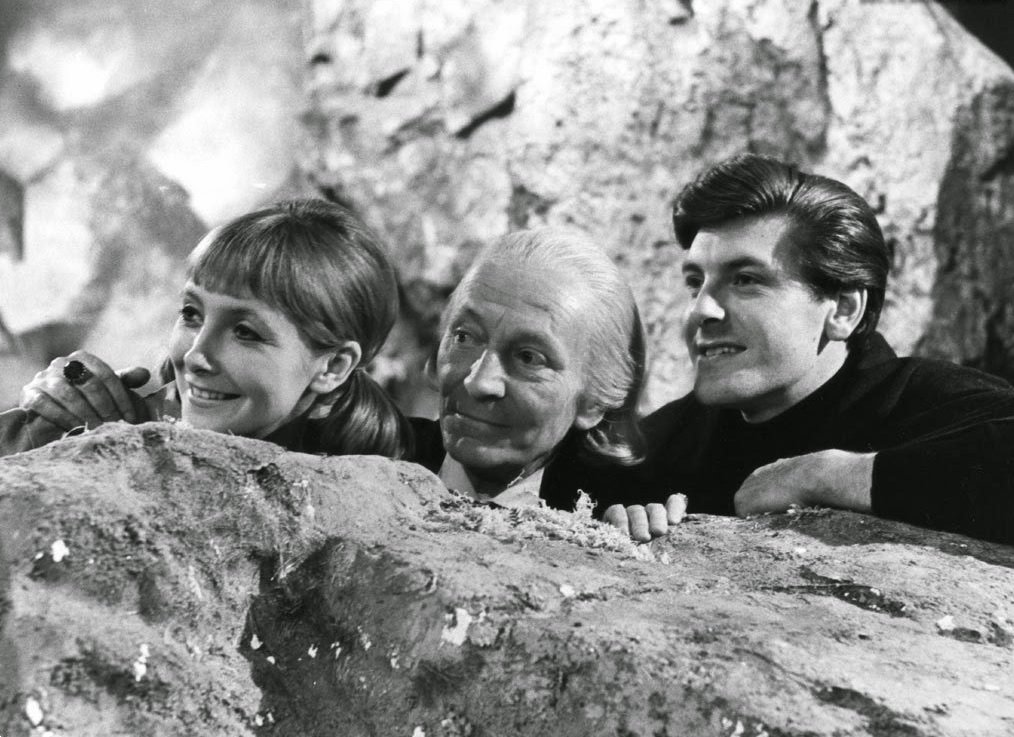
Written by Dennis Spooner, directed by Douglas Camfield
Episode titles: “The Watcher”, “The Meddling Monk”, “A Battle of Wits”, “Checkmate”.
This was a wonderfully written and produced quasi-historical, that was both fun and frightening at points, but I expect nothing less from Spooner. The Doctor’s separated from Steven and Vicki for most of this one, but that may have been to spotlight the two companions as they get to know each other. Steven’s a bit abrasive here as the sceptic, but then again, he’s got every right to be. He keeps getting conflicting info about what century he’s really in. It’s the battle of wits between the Doctor and the Monk, though, that’s most entertaining.
On the dark side, you’ve got the viking raiding party that assaults and traumatises a woman in the village. Spooner always gives you light moments, but is careful to balance them out with harsh reality. You’ve got to admire the honesty there.
The Monk would only appear one more time, during The Daleks’ Master Plan. I’d have to guess that if Hartnell kept on going for a full fourth season, they might have brought in the Monk again, as they made for good rivals. At the same time, I can see why they wouldn’t keep it going when Patrick Troughton came along. The Monk was a bit too similar to the Second Doctor, what with the impish attitude and mop of hair.
This was a very good story to end the season on though. New TARDIS crew, and a new rival for the Doctor, who just happened to be one of his own people!
8 of 10.
Overall, I’d say Season 2 is easily as solid as the first, possibly even a tiny bit better. I heartily recommend getting this box set and enjoying it episode by episode even more so than story by story. Enjoy the “Overview”. It really does present the show, the narrative, the regulars in a different light. Something we lost — to an extent — by the end of the Hartnell era.
I’m very curious as to which of the back and white seasons they’ll release next. Since they’ve been filling the holes in Season 4 with animation, that’s a possibility, but Seasons 1, 5, and 6 are only missing one story each. Since the BBC have now demonstrated that they have no problem releasing an incomplete season on Blu-ray, anything goes.
It seems as though as long as the missing episode count isn’t too high, they’ll take the risk. Maybe they’re also watching how sales are for this one, monitoring feedback on exactly how much the incomplete aspect hurts them. We’ll see.
And what of you, dear reader? Which ‘60s season are you rooting for to come out next?
